Grant Banbury – 11 November, 2019
As acrylic paints came into use in the 60s, Quentin became a master at manipulating the medium. As his friend John Coley observed, his paintings always presented an ‘eye-pleasing handsomeness. (2)' At times, expressionist brush-marks retreated giving space for more delicate tonal shifts achieved through spray-gun, roller, monoprinting and scraping techniques. Titles such as 'Southerly Stormclouds', 'Marine Sketch', and 'Scarborough Breakwater' reference weather patterns and the sea, linking his imagery to experiences and locations near his home environment and beyond.
EyeContact Essay #34
The first painting I can remember seeing of Quentin’s was in January 1974; a large geometric abstract, hanging on the end-wall of the expansive first-floor Mair gallery at the CSA in Christchurch. In my eyes the work was classy, elegant and considered.
The painting was included in Art N.Z.‘74, an invitational show of contemporary art and craft by noted artists from throughout the country and staged to coincide with the Christchurch Commonwealth Games. The vertical composition of the work, Marquet Series II, remains vivid in my mind. Central horizontal bands became a horizon of sorts and divided the canvas into two areas. A corner triangle, lower right, and a curved, rounded form subverted the top right corner. Later, I became aware how variations of these configurations informed Quentin’s paintings.
Born in Dunedin in 1935, Quentin studied at Canterbury College School of Art in the late ‘50s. He was amongst a wave of young aspiring fine art students determined to challenge Christchurch’s staid art scene. Included amongst the group were Patrick Hanly, Bill Culbert, Trevor Moffitt, Ted Bracey, Hamish Keith, John Coley and others. Quentin’s first solo show in Christchurch was held in 1960 at Gallery 91, the same year he was invited to become a member of The Group. His work was included in important touring survey exhibitions initiated by Auckland City Art Gallery under director Peter Tomory. He went on to exhibit nationally in group and solo shows, received two QE II Arts Council grants, and is represented in most public gallery collections.
In 1975, Quentin became involved in the social networking and carpentry of the Brooke/Gifford Gallery, established by his wife, Judith Gifford, and Barbara Brooke. As the only dealer gallery in Christchurch at that time, it welcomed a new level of professionalism for both artists and collectors alike. Supporting established and emerging artists, it successfully ran for 36 years. Like many fine art students at Canterbury University, I too was keen to exhibit with them and presented my Honours show there in 1979. Looking back, it’s amazing to think just how many careers it launched.
By the late ‘70s, following stints teaching art at Cashmere High School and Teachers’ College, Quentin found himself tutoring part-time in the painting department at the University of Canterbury School of Fine Arts working alongside Bill Sutton (his former teacher), Don Peebles, Doris Lusk and Barry Cleavin. Quentin’s extensive knowledge of the physical properties of paint and paper, combined with sound technical advice, were all generously shared. He showed us how to make wooden frames for stretching our canvases, preparing grounds to paint on and, at times, assisting students to frame their work (few people are aware that two major McCahon paintings in Christchurch Art Gallery’s Collection grace frames Quentin made). I remember a very special moment, sometime in the 80s, when he took me to visit Gordon Walters at his home and studio in Ilam.
In 1980, the publication of Contemporary New Zealand Paintings, Vol I: A-M was a revelation at a time when we were starved of books about contemporary art in this country. Handsome and well-designed, and presented in a striking slipcase. Informal interviews by Jim and Mary Barr partnered Marti Friedlander’s superb colour photographs. Suddenly artists’ lives, their paint-splattered or immaculate studios and their families, were centre-stage on the coffee-table. Captured in the act of painting in his Sumner studio, Quentin is seen applying the first fluid brush marks on a white canvas, acknowledging his process-based approach to art making (1). And on an easel behind him, a classic 60s ‘blue seascape’ is quintessential MacFarlane — a marine theme that sustained a lifetime of evocative, luscious paintings.
As acrylic paints came into use in the 60s, Quentin became a master at manipulating the medium. As his friend John Coley observed, his paintings always presented an ‘eye-pleasing handsomeness. (2)’ At times, expressionist brush-marks retreated giving space for more delicate tonal shifts achieved through spray-gun, roller, monoprinting and scraping techniques. Titles such as Southerly Stormclouds, Marine Sketch, and Scarborough Breakwater reference weather patterns and the sea, linking his imagery to experiences and locations near his home environment and beyond. I recall his solo presentation at the Robert McDougall in 1984: textured paintings saturated in rich blues, deep purples and vibrant reds. Explosive white marks descending from the top of the canvas into a sea of sky-blue suggested something more profound than clouds or the crest of a breaking wave. In 1991 he remarked: ‘I’m really trying to show people that the paint’s put on with a bit of gusto. (3)’
While in Dunedin in September I was surprised to see a portrait of Quentin’s mother, Tui Northey, hanging in the Dunedin Public Art Gallery. The work, dated 1929, was painted by W.H. Allen. Tui trained at the Art School in Dunedin where Allen was one of her tutors. It wasn’t hard to discern a MacFarlane family resemblance.
Contemplating Quentin’s oeuvre, one thought lingers … was he (in the best sense) re-working one idea, that of seeing how far he could explore the ever-changing rhythms and patterns of sky, sea and land and his personal response to it? One of Quentin’s paintings, Quiet Passage (1977), hangs in our lounge in Christchurch. It’s about the sea, about time shifting and changing atmospheres. Understandably the nuanced bands of colour create subtle tones difficult to describe, yet the image draws me back again and again. It remains a favourite.
In July this year Quentin, aged 83, died in Auckland where he’d lived since the late 90s. A short time later a gathering of family and friends was held at Terry Stringer and Tim McWhannell’s home to celebrate his life. His presence in the Christchurch art scene over many decades remains strong for former students and those who knew him and his work. Quentin MacFarlane leaves a significant body of exceptional paintings, a unique vision deserving of in-depth analysis that could only really be achieved by a well-researched survey show … let’s hope it’s not too far off.
Grant Banbury
(1) See Jim and Mary Barr, Contemporary New Zealand Paintings, Volume I: A-M, Alister Taylor, Martinborough, 1980, p. 147.
(2) John Coley, ‘Quentin MacFarlane’, Art New Zealand 17, Spring 1980, p. 17.
(3) Peter Simpson ‘Performance: Art “I really get a buzz out of it” ‘, Listener & TV Times, 10 June 1991, p. 83
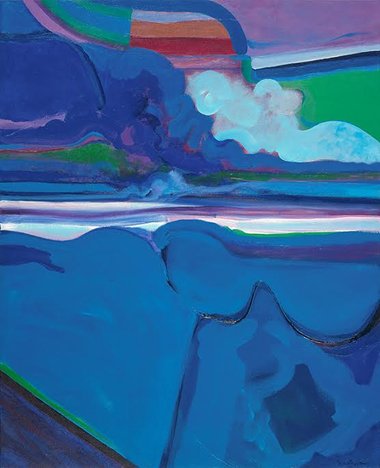

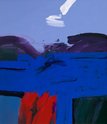
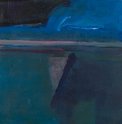
 Two Rooms presents a program of residencies and projects
Two Rooms presents a program of residencies and projects Advertising in this column
Advertising in this column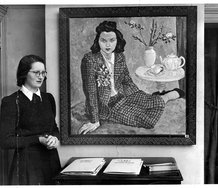
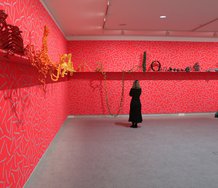
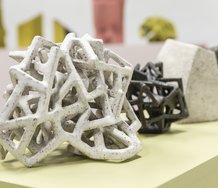
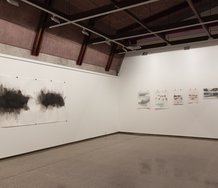
This Discussion has 0 comments.
Comment
Participate
Register to Participate.
Sign in
Sign in to an existing account.